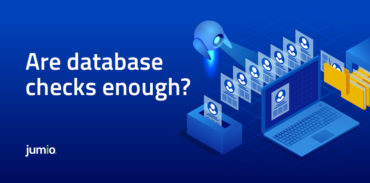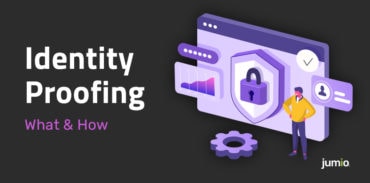Filter by
Most Recent
- Most Recent
- Most popular

All time
- All time
- This Month
- This Year


How to Build End-to-End Digital Trust for Payments and Financial Services
Did you know that in 2020, 84% of businesses in Asia Pacific reported losses in revenue due to payment fraud? Or that synthetic identity theft is growing despite strong Know Your Customer (KYC) practices — because, to date, there has been no efficient way to uncover this type of fraud? Thanks to the rise of…

KYC Requirements Guide For AML Compliance in Financial Institutions
A key component of all Anti-Money Laundering (AML) efforts is Know Your Customer (KYC). Financial services organizations and any business that deals with the collection and disbursement of money help limit money laundering when they follow KYC procedures and verify the identity of customers. The main goal of KYC is to start this verification process…

When are database checks enough for digital businesses?
When the world first went into a pandemic lockdown, it became necessary — almost overnight — to transact and interact online. This, in turn, accelerated the shift toward digital identity (ID) systems for many countries. Why digital IDs? Essentially a set of electronically captured credentials about a person, these digital IDs help ensure that everyone…

7 Common Examples of Money Laundering Techniques & How They Are Used
Money laundering is a widespread issue in the financial industry and is hard to eliminate. Because the practice is so prevalent and damaging, most financial institutions are required to have anti-money laundering (AML) technology in place so they can stay compliant with federal regulations. These institutions must be proactive in the fight against money laundering…

Protecting Minors — and Businesses — Online
Online minor safety is a fundamental requirement for every business with a digital presence. Whether it’s preventing underage users from accessing adult content, gambling or even renting a scooter, businesses must ensure their customers are who they say they are and are suitable to do business with. But kids are savvy, and many have found…

eIDAS 2: Transforming Electronic Identification with Digital Wallets
Governments have always issued some type of “traditional” identity document (e.g., passports, national IDs, driver’s licenses) that helped citizens identify themselves in the physical world. With the rising importance of online transactions for both public and private services, governments as well as private identity providers are creating electronic versions of these traditional documents, which are…

3 Key Findings from Jumio’s Digital Identity 2022 Research [Infographic]
Providing a digital identity to create an online account or complete a transaction is becoming more commonplace globally. A digital identity is an electronic file containing a person’s identity information, often used to prove their identity online. Gartner has predicted that by 2024, “a true global, portable, decentralized identity standard will emerge in the market…

How Does Selfie Identity Verification Work?
With the continued rise of cybercrime, companies have adopted more sophisticated methods of ID verification. In addition to user names, passwords, security questions and ID documents, many are using multi-factor authentication, biometric verification (including facial and iris verification) and liveness detection. These methods are sometimes necessary to determine whether a person is who they claim…

How KYC and Blockchain Technology Can Operate Together Successfully
Blockchain technology has not yet achieved true mainstream status, although its uses have been expanding over the last few years. Cryptocurrency, for example, has been a tempting and lucrative investment for many consumers who are attracted to its decentralized structure. Crypto is not controlled by a single entity such as a bank or government, and…

Understanding Suspicious Activity Reporting & Its Requirements
Financial crime is ubiquitous and often difficult to detect. That’s why governments around the world require financial institutions to take measures that will flag suspicious transactions. Of course, this responsibility is a delicate one, since transactions that look suspicious may be perfectly legal while illegal transactions can sometimes appear to be legitimate. However, the only…

What Is Identity Proofing And How Does It Work?
As individuals and businesses become increasingly dependent on online financial transactions, identity fraud has become a costly issue. Without the proper precautions, it’s all too easy to hack into personal accounts and websites, allowing cyberthieves to steal billions of dollars in assets each year. That’s why identity proofing has become so important in fraud prevention…

Establishing Trust in a Digital World
Because nearly every component of modern life embraces digital channels, the need to obtain confidence in the identities of customers, citizens, partners and employees through remote interactions continues to grow. According to the 2022 Gartner® Market Guide for Identity Proofing and Affirmation, which names Jumio as a Representative Vendor, identity proofing is key to establishing…

